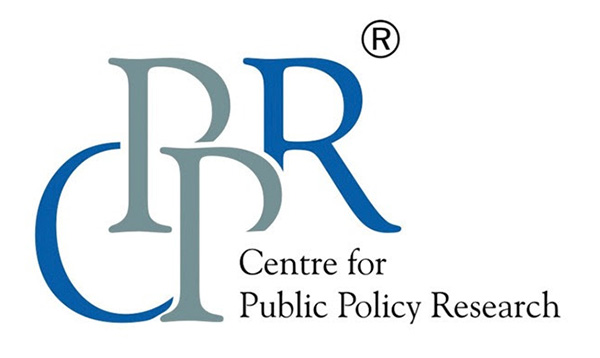Articles

കിറ്റക്സ്സ് വിവാദവും കേരളത്തിലെ നിക്ഷേപക സൗഹൃദ അന്തരീക്ഷവും | Kitex controversy and Investment Climate in Kerala
July 16, 2021
What a mid-pandemic reshuffle has in its fold ?
July 19, 2021COVID-19 and other pandemics in history: Lessons and findings

Introduction
Since it began in 2019, Covid-19 pandemic has rendered people, economies and countries critically vulnerable. As warnings and preparations for a third wave are underway, it is pertinent to look at the prominent pandemics in history for possible lessons which may help Covid-19 management better.

Pandemic Observations & Possible Explanations
- Geographical spread is linked to migration and transport technology of the times.
- Timeline and death toll are asymmetric.
- Death toll is in varying order.
Pandemics in history (Table.1) deliver three clear findings-
1. Geographical Spread
This article examines fourteen major pandemics in history to draw lessons to better understand the current crisis. Instead of historical narratives, empirical evidence is used to derive important lessons and possible findings which could be correlated to Covid-19 crisis management challenges. Three prominent variables – death toll, timeline and geographic spread of 14 prominent pandemics are empirically analyzed here to reflect on pandemic lessons from history.
Table.1 illustrates that not all pandemics had a similar geographical spread. Pandemics like the Plague of Athens and the Great Plague of London were localized in a particular region. While other pandemics like the Black Death, Cholera and the Spanish-Flu had a worldwide impact. This difference in geographical spread is also reflected in differences in death toll. When pandemics have a worldwide impact, they affect a large number of people causing more deaths. While localized pandemics only affect the local population and hence the death toll is comparatively lower
Table.1 also shows that none of the prominent pandemics in the last 200 years was localized. This could be attributed to the increase in global trade and connectivity in this period (Data, 2018). The Pandemic with the largest death toll (Spanish-Flu) and the one that lasted the longest (3rd Cholera) is also during this period.
2.Timeline
Fig.1 shows that some pandemics like Cholera lasted far longer. European colonizers carrying cholera colonized different parts of the world over a long period which paced its spread to longer duration (Hays, 2005). Another reason for Cholera’s slow spread was the time it took to discover that it is a water borne disease (Kiple, 2008).
It can also be noted that, years lasted doesn’t necessarily increase the death toll. The Spanish-Flu which lasted only for 2 years caused 500 lakh deaths, while Cholera which lasted much longer resulted in a lower death toll.
3. Death toll
From Table.1 it is evident that the death toll for the Antonine Plague, the Black Death and the Spanish Flu is disproportionately high compared to the other pandemics. While the spread of the Antonine Plague and the Spanish Flu was aided by the movement of troops due to war, the Black Death and the Spanish Flu reached wider geographic regions owing to increased usage of trade routes, especially sea routes. And the intensity of all three of them were exacerbated due to the high spread in densely settled cities (Hays, 2005).
Fig.2 illustrates that the death toll is consistently higher during a latter historic period than the one before. Higher availability of data, increase in trade and connectivity and globalization could explain this trend. It is worth noting that this trend exists despite the advances made in science. If this trend continues, contemporary times could see more deaths due to pandemics than earlier times.
Conclusion
So far Covid-19 has killed 3.8 million people (WHO, WHO Covid-19 Dashboard, 2021). Like Cholera and the Black Death, that traveled through colonization and trade routes, Covid-19 spread across the world due to increased global connectivity. Despite significant scientific advances today, incidence of higher death toll can be linked to quicker transport and intense global connectivity and interdependence. The possibility of Covid-19 being a lab designed
bioweapon (POLITIFACT, 2021) further complicates the issue. Given the interdependent world order, neither globalization nor travel can be curtailed. Under these circumstances, hygienic lifestyle, vaccinations, and travel restrictions seem to be the only way forward. Covid-19 bioweapon angle needs stringent global protocols to halt irresponsible geopolitical ambitions.
(Authors wish to thank Prof. RP Pradhan, BITS Pilani Goa Campus, for idea and research direction for this Article)
References
Hays, J. N. (2005). Epidemics and Pandemics. Santa Barbara, California: ABC-CLIO.
Kiple, K. F. (Ed.). (2008). The Cambridge World History of Human Disease. United States of America: Cambridge University Press.
POLITIFACT. (2021). Debating the origins of the COVID-19 virus: What we know, what we don’t know. Retrieved 2021 June: https://www.politifact.com/article/2021/may/17/debating-origins-covid-19-virus-what-we-know-what-/
Data, O. W. (2018, October). Trade and globalization. Retrieved 2021 June: https://ourworldindata.org/trade-and-globalization
WHO. (2021, June). WHO Covid-19 Dashboard. Retrieved June 2021: https://covid19.who.int/
This article was written by Sonal Kuruvilla and Mohammed S. under guidance of Dr. R P Pradhan, CPPR Distinguished Fellow
Views expressed by the author are personal and need not reflect or represent the views of Centre for Public Policy Research.

